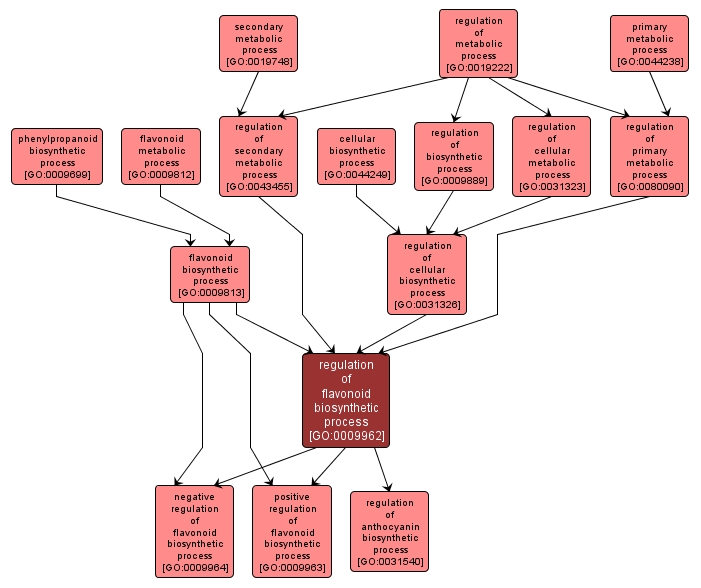GO TERM SUMMARY
|
| Name: |
regulation of flavonoid biosynthetic process |
| Acc: |
GO:0009962 |
| Aspect: |
Biological Process |
| Desc: |
Any process that modulates the frequency, rate or extent of the chemical reactions and pathways resulting in the formation of flavonoids. |
Synonyms:
- regulation of flavonoid formation
- regulation of flavonoid biosynthesis
- regulation of flavonoid synthesis
- regulation of flavonoid anabolism
|
|

|
INTERACTIVE GO GRAPH
|














